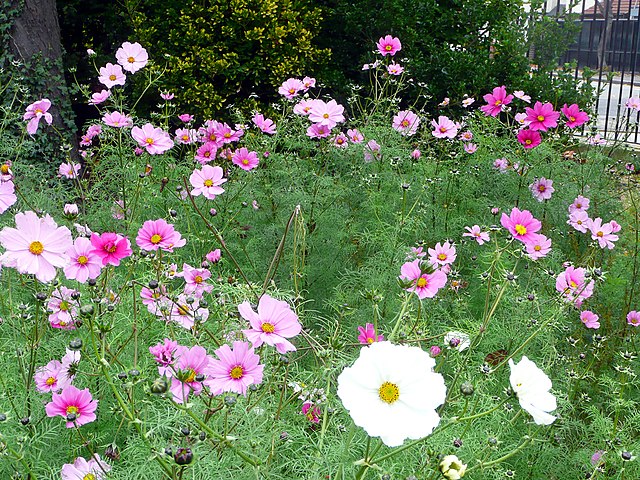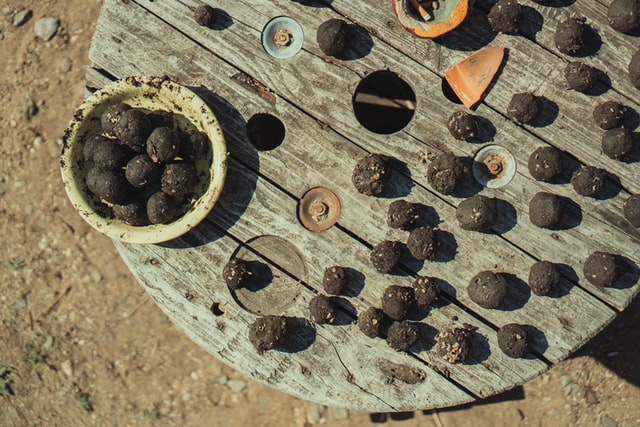Guerrilla gardening has had a resurgence in recent years, but how can we participate?
People all across the world are taking part in guerrilla gardening (essentially gardening without asking) usually on publicly accessible land in order to do their bit for the planet, reclaim land from property developers, or to increase local biodiversity and add a burst of colour to the dull concrete streets of the big city.
In light of the recent UN Climate Change Conference (COP26) in Glasgow, Scotland, it is clear that now more, than ever we must do our part in tackling climate change, which has gone from being a fringe issue to a global priority. As well as the climate emergency, we face another crisis due to global warming: biodiversity breakdown. We are at risk of an ecological meltdown. According to an article by the BBC, the UK has an average of about half its biodiversity left, far below the global average of 75%. Furthermore, urban growth has increased rapidly, rising by 6.2% from 2011-2019. This is a key contribution to the loss of biodiversity as the growth of cities destroy large areas of natural habitat on which many species depend.
Guerrilla gardening is not a new phenomenon, however it is enjoying a resurgence thanks to the heightened climate consciousness and houseplant mania that has come to dominate social media, especially during the pandemic. People all across the world are taking part in guerrilla gardening – (essentially gardening without asking) – usually on publicly accessible land in order to do their bit for the planet, reclaim land from property developers, or to increase local biodiversity and add a burst of colour to the dull concrete streets of the big city.
The guerrillagardening.org has some tips on how to get started on guerrilla gardening. You just need to find an unused plot of land (such as neglected flower beds, concrete planters sprouting litter and untamed plants, or bare plots of mud). Then, find a local supply of durable, colourful plants, or, alternatively, you can use seed bombs (sometimes called green grenades) which are seeds and soil held in an explosive or degradable capsule. It’s that simple.

TikTok experienced “huge growth” during the pandemic – growing from three million U.K. adult visitors in September 2019 to 14 million in March 2021 (hollywoodreporter.com). The growth in social media usage has led to heightened awareness around climate change and has also helped to encourage young people to take part in guerrilla gardening. At the time of publication, the hashtags #guerillagardening and #guerrillagardening had amassed a collective 14.2 million views, taking up a sizable corner of TikTok’s environmentally focused community, known as EcoTok. This shows the potential reach social media apps like TikTok have and therefore the power to incite change amongst people. There are many influencers on the app who provide tips and encourage users to take part in guerrilla gardening.
Ellen Miles (@octaviachill on TikTok) is one of the largest environmental influencers on so called EcoTok. She is the self-described ‘Seed Bomb CEO’ and actively encourages her (as of time of writing) 52.8k followers to take part in guerrilla gardening.
Her account is full of videos on how to use seed bombs, vlogs and ‘before and afters’ of her guerrilla gardening projects, and ‘how-to’ videos on how to make said seed bombs and start a project. Her videos are informative and funny, making them appealing and encouraging to a young audience.
Her most-liked video (116.1k likes) reveals that she turned a lawn on a golf course into a wildflower meadow, showing the lengths one can go-to to transform plain patches of land. She encourages the use of seed bombs as they are the easiest form of guerrilla gardening – all you have to do is throw them onto a patch of soil and watch the plants grow, making it a “more subtle and surreptitious way to plant in public spaces rather than getting down on your hands and knees to plant”, she says, “the seedlings are more likely to survive rather than just scattering them”. They are easy to make, too.
Just mix paper and water in a blender, add the seeds, drain out the excess water in a cloth and then roll the mixture into little balls. You can put them in your bag and take them everywhere, just in case!

Despite the huge benefits of guerrilla gardening as a way to help improve biodiversity and during the height of the climate crisis, it is actually considered an illegal activity, which is something to be aware of before taking part. This illegality makes it somewhat of a protest project against urban planning and the destruction of natural habitats and environments. However, as long as the area where you are planting is unused and not on a protected spot e.g. a nature reserve or National Trust site, then there is unlikely to be a problem. After all, you are transforming a patch of unused land which will have environmental benefits.
There is a certain charm to guerrilla gardening being a legal grey area, but its true value lies in its immediate impact. Guerrilla gardening puts the power to transform the streets that people live in directly into the hands of the people who live there. It lifts people’s spirits seeing bright patches of life in otherwise bare, grey spots.
Social media apps like TikTok have helped to encourage a new wave of young activists who are playing their part to help transform neglected parts of the city and restore biodiversity.
It’s easy to feel despair about our planet’s fate, when the challenges we face are huge and seem to rest on the shoulders of the younger generation. But there is power in giving ordinary citizens a small, tangible way to play their part in the effort to stop climate change.
Learn more: guerrillagardening.org
